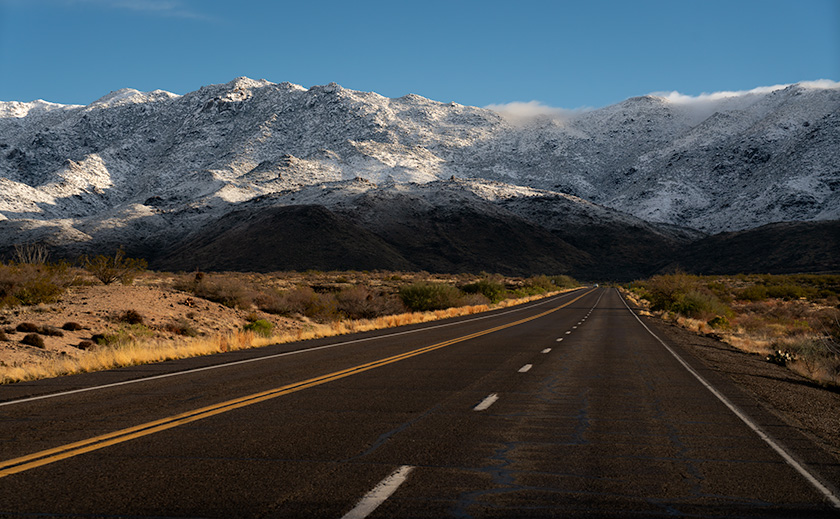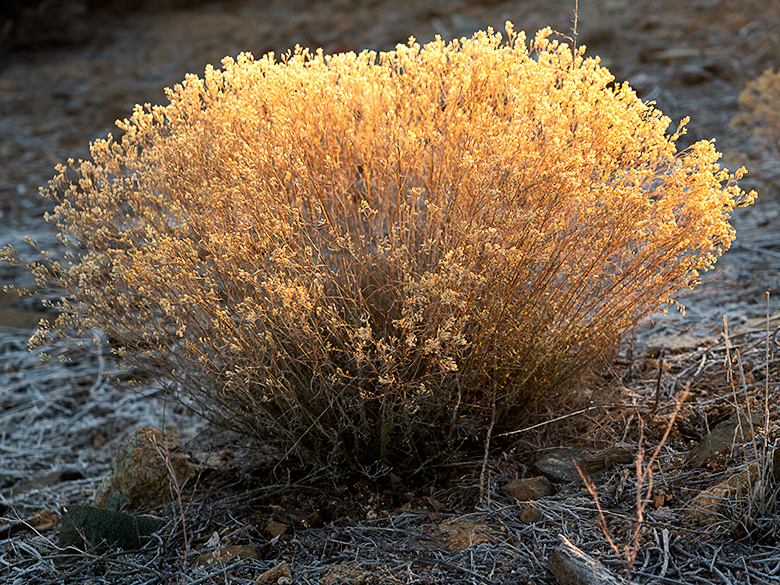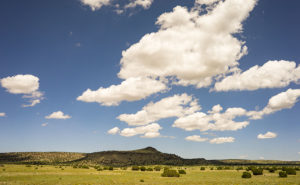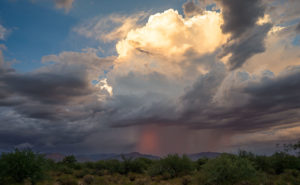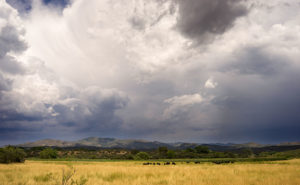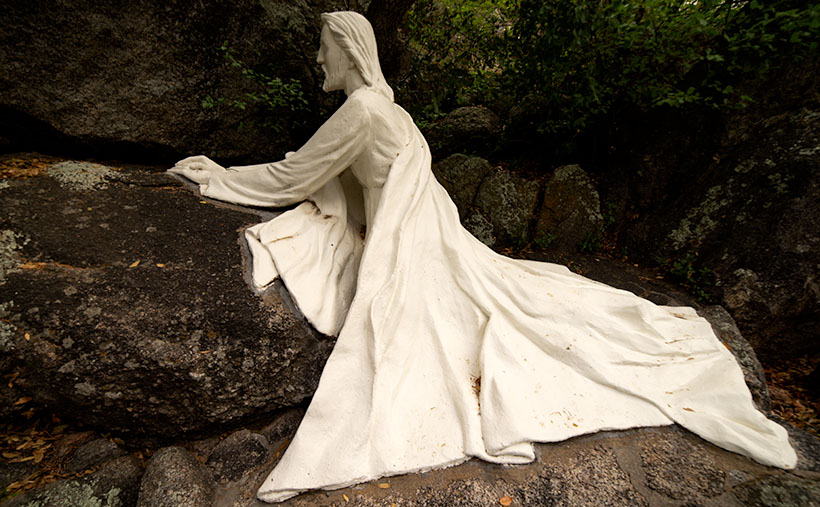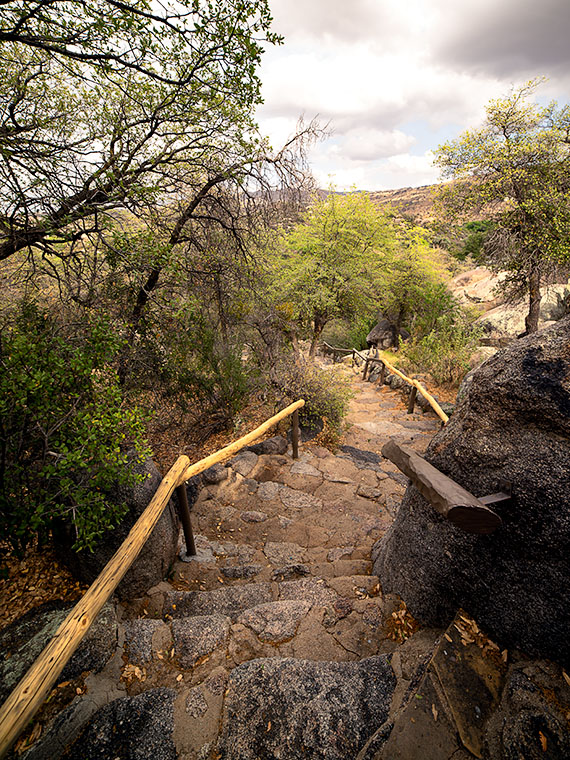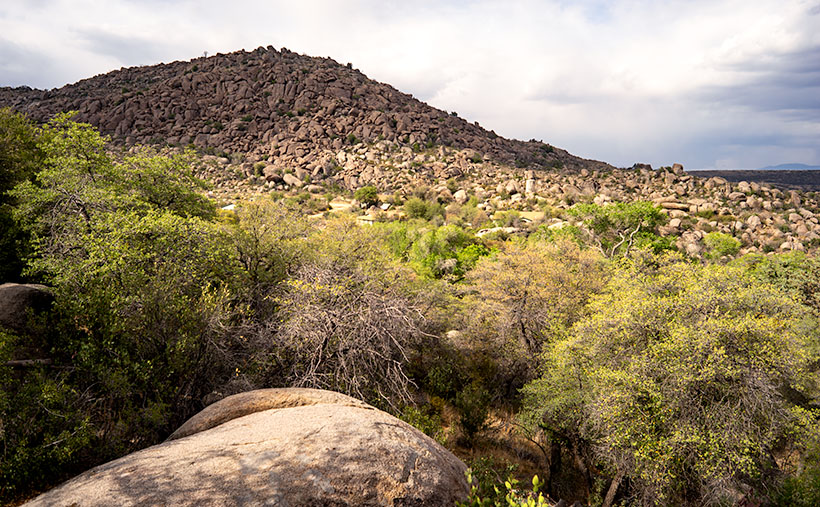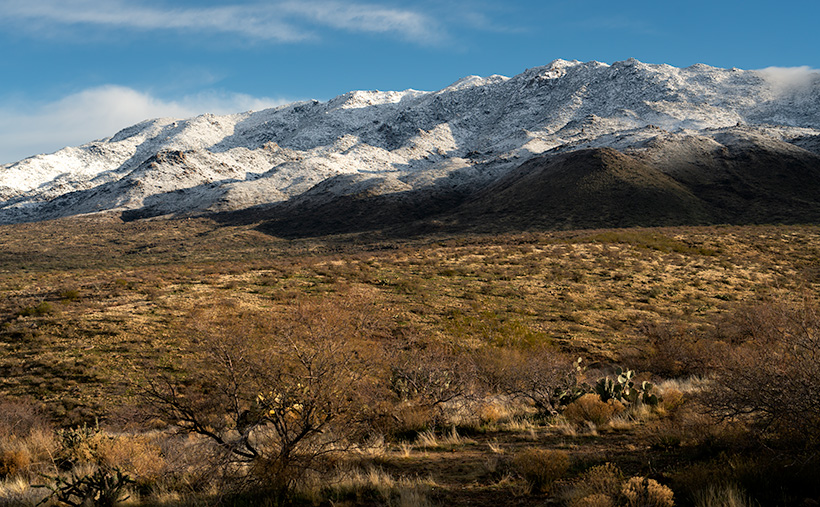
Greetings again from the heart of what’s suddenly become the Arctic Circle’s kissing cousin, our own Weaver’s Winter Wonderland. This week’s spotlight, Desert Dichotomy, is yet another snapshot from that astonishing February storm that dared to blanket the Weavers in snow. This time, I’ve dared to pair the icy peaks with the sopping-wet desert flora upfront, striking a contrast that even a snowbird might find chillingly beautiful.
It’s been a month heavy with winter portraits, an oddity for us desert dwellers, and an outright betrayal for the snowbirds who come here seeking sanctuary from their shovel-laden driveways. Bookmark your favorite image, friends, because the mercury is on an upward trajectory. Soon, as you fan yourself on a patio sweltering under a 115° sun, these images might be the only breeze you’ll feel. You’ll find larger copies on my website <Jim’s Page> and Fine Art Americas <FAA Link>.
Decisions, Decisions
There I was, knee-deep in mud, the cold nipping at my every extremity, and it hit me—I was actually having fun. A realization dawned, brighter than the sun glinting off the snow: Photography, with its promise of eternalizing a moment, is the lifeblood of my existence. It’s not the accolades or the Instagram likes; it’s the mud, the cold, and the hunt for the perfect shot.
Background and Evolution
In 2002, this website was a digital photo album devoid of captions, context, or care. As all things do, it evolved into a monthly newsletter recounting the high-stakes drama of our lives—Queen Anne and I versus the Wild. The Alaska expedition of 2016 demanded daily updates, transforming the newsletter into a casualty of efficiency. After returning to our home in Arizona, we switched to weekly posts, turning my Sunday mornings into a spirited race against my verbosity.
Feedback from you, dear readers, nudged me towards improvement. Books on writing, a thesaurus thick enough to serve as a murder weapon, online classes, and software soon became my weapons of choice in a battle against mediocrity. The downside? What once was a quick jaunt through my thoughts now takes days of meticulous crafting. In my quest to hone the written word, I nearly forgot the joy of wrestling with alligators—metaphorically speaking.
Frequency Insights
Buried in an internet rabbit hole, I unearthed a nugget of wisdom: The best newsletter frequency is once or twice a month. My inbox, swollen with the daily messages from overzealous websites, confirmed this truth. Too much of a good thing, and I’m out in the garage, hunting down the unsubscribe mallet.
Looking Ahead
Hence, we pivot. The weekly parade will cease, creating a monthly spectacle beginning in April. ‘The Picture of the Month’ will emerge, promising less inbox clutter and more breathing room for storytelling and photography. Imagine—more comprehensive tales, less repetition, and an inbox as unburdened as a desert sky.
Your seat on this journey is reserved; your input is invaluable. In the comments below, let us know your thoughts on our impending metamorphosis. With this shift on the horizon, we’re poised to dive deeper, travel further, and share the essence of our adventures with renewed vigor.
To more unhurried adventures and the promise of untold stories waiting just beyond the lens. Here’s to less time spent with the thesaurus and more pressing the shutter button.
Until our trails cross again;
jw

